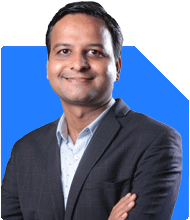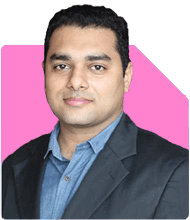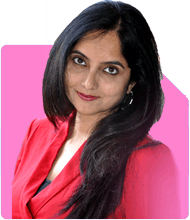Hello Sir, I am 49 years old and for the past 3 years have been investing in mutual funds. I request you to kindly analyze my portfolio which I am investing like this - parag parikh flexi cap - 30k; icici equity and debt - 20k; uti mnc fund - 15K; hdfc index fund - 15K; sbi small cap 10K; quant small cap - 10K; Motilal oswal mid cap - 15K; hdfc balanced advantage fund - 10K; mirae asset large and mid cap fund - 10K. Can you kindly advise if this portfolio is going to help me create a 10Cr. portfolio in next 10 years and to create a fund of 10Cr., what changes in investment I should do? Thanks & Regards!
Ans: At 49 years, and with a 10-year goal to create a Rs.10 crore corpus, you have taken a disciplined and committed approach. Your monthly investment is around Rs.1.45 lakh. That is a significant and appreciable contribution.
Now, let’s go step by step and evaluate your portfolio from a 360-degree perspective. The idea is not only to review your existing funds but also to suggest suitable changes or improvements, if required, to increase the likelihood of reaching your Rs.10 crore goal in 10 years.
1. Age and Time Horizon Assessment
You are 49. That means your retirement and major life goals are less than 11 years away.
You have about 10 years to grow your wealth. This is a medium to long-term horizon.
At this age, protecting capital becomes as important as growing it.
Hence, your investment plan should give growth with stability.
2. Monthly Investment Assessment
You are investing Rs.1.45 lakh per month in mutual funds.
This is a strong and committed savings habit.
Based on this input, the total amount you can invest over 10 years will be sizeable.
But whether this grows to Rs.10 crore depends on:
The fund mix.
Risk-return balance.
Market behaviour.
Asset allocation discipline.
So now let’s assess your mutual fund portfolio deeper.
3. Portfolio Structure Evaluation
Your portfolio includes the following categories:
Flexi Cap
Equity and Debt Hybrid
Thematic (MNC)
Index
Small Cap
Mid Cap
Balanced Advantage
Large and Mid Cap
Let’s go one by one.
4. Flexi Cap Allocation
You are investing a major chunk here.
Flexi cap funds are good as they allow full flexibility to move across market caps.
These funds are actively managed. Fund managers can shift between large, mid, and small caps.
This category brings diversification and agility to your portfolio.
Keep this fund. It plays a core role in your strategy.
5. Hybrid Equity and Debt Fund Allocation
You are investing in a fund that blends equity and debt.
These funds reduce risk slightly. But long-term returns are also moderate.
For your goal of Rs.10 crore in 10 years, high growth is important.
This fund can remain, but allocation should not be too high.
Consider shifting some part of this allocation to mid or large-mid cap category.
6. Thematic and Sector Funds (Like MNC)
These funds are high-risk because they are concentrated.
Thematic funds like MNC focus only on one theme.
If the theme underperforms, your returns suffer.
15K per month is on the higher side for a thematic fund.
Consider reducing the allocation here.
Instead, put that amount in a diversified large-mid cap or flexi cap fund.
7. Index Fund Exposure
Index funds are passively managed. They copy the index.
There is no human research or fund manager strategy.
They perform exactly like the market – no outperformance.
Actively managed funds have the chance to beat the market.
Also, during volatile times, index funds fall as much as the market.
Active funds have fund managers to reduce damage.
Exit index funds slowly. Move those investments to actively managed large-mid or flexi cap funds.
8. Small Cap Fund Exposure
You have Rs.20K in small cap funds (two schemes).
This is about 14% of your total SIP.
Small caps are high return but very high risk also.
They can fall 50% in tough times.
At 49 years, high exposure to small cap is dangerous.
Keep only 10% in small cap.
Shift 5K monthly to a large-mid cap or balanced advantage fund.
9. Mid Cap Fund Exposure
Rs.15K monthly is going into mid cap.
This is a decent and justified allocation.
Mid caps give a good balance between risk and return.
Keep this investment. Do not reduce.
Monitor performance of fund every year.
10. Balanced Advantage Fund
You have Rs.10K in this category.
These funds shift automatically between equity and debt.
They reduce risk when markets are high.
They become aggressive when markets fall.
These funds bring stability and protect downside.
You may increase this by Rs.5K if you reduce small cap or thematic exposure.
11. Large and Mid Cap Fund
Rs.10K monthly is allocated here.
This category gives balanced exposure.
Large caps give safety and mid caps give return.
Increase allocation to this type of fund.
Move part of index and thematic funds here.
12. Asset Allocation Summary
Let’s simplify your portfolio into broader categories:
Core funds (flexi cap, large-mid cap): These should be around 50–55%
Satellite funds (mid cap, small cap): Around 25–30%
Risk management (hybrid, balanced advantage): Around 15–20%
Avoid thematic or reduce to less than 5%
Currently, your thematic and small cap portion is slightly higher than ideal.
Rebalancing is needed.
13. Direct vs. Regular Fund Investment
If you are investing through Direct funds, you may be missing two things:
No ongoing review by a Certified Financial Planner
No behavioural support during market ups and downs
Direct funds may look cheaper. But there is no advisory support.
Investing through Regular funds via MFD with CFP brings you:
Ongoing guidance
Yearly portfolio rebalancing
Emotional discipline during volatility
Tax-efficient withdrawal strategy
Goal tracking and review
So always invest through a Certified Financial Planner using regular plans.
The value of correct advice is more than 1% extra return.
14. Expected Growth vs Rs.10 Crore Goal
Whether your current investment will give Rs.10 crore depends on:
Staying invested for 10 years.
Maintaining Rs.1.45 lakh SIP.
Rebalancing the portfolio yearly.
Managing downside risk properly.
Not making panic decisions during market falls.
Even then, there is no guarantee.
But if your portfolio is corrected as above and supported by a Certified Financial Planner:
Your chance of achieving Rs.10 crore is reasonable.
Add top-ups of Rs.10–15K every year to improve it.
If your income grows, increase SIP accordingly.
15. Taxation Awareness
From April 2024, mutual fund taxation changed:
Equity Funds: LTCG above Rs.1.25 lakh taxed at 12.5%
STCG taxed at 20%
Debt Funds: All gains taxed as per your income tax slab.
You must plan withdrawals to save taxes.
That’s why a Certified Financial Planner is needed to create a withdrawal ladder.
16. Review Frequency
Review portfolio every 6 to 12 months.
Do not change funds based on short-term returns.
Keep the number of funds between 6 to 8. More funds create overlap.
17. Risk and Return Balance
Your current portfolio is a bit aggressive due to small cap and thematic funds.
Reduce high-risk exposure.
Focus more on core diversified funds.
That will give better sleep and steady returns.
18. 360-Degree Planning Approach
Creating Rs.10 crore is not just about mutual funds.
You need a full financial plan:
Retirement goal clarity
Emergency fund readiness
Medical and term insurance
Estate planning (nominations, will)
Goal-wise investment mapping
Tax planning
Annual review
Your investments must be aligned with life goals.
A Certified Financial Planner will give this 360-degree guidance.
19. Behavioural Control During Market Volatility
Markets will fall during your 10-year journey.
You must not stop SIPs during that time.
Don't switch to safer options due to fear.
A planner keeps your emotions in check.
That helps you reach Rs.10 crore goal calmly.
Finally
You are on the right path with disciplined SIPs.
Your fund selection needs minor rebalancing.
Reduce small cap and thematic exposure.
Exit index funds. Move to actively managed funds.
Add more to large-mid or flexi cap category.
Review yearly and increase SIP with income growth.
Track portfolio with help of a Certified Financial Planner.
Stay invested, stay focused.
Best Regards,
K. Ramalingam, MBA, CFP,
Chief Financial Planner,
www.holisticinvestment.in
https://www.youtube.com/@HolisticInvestment






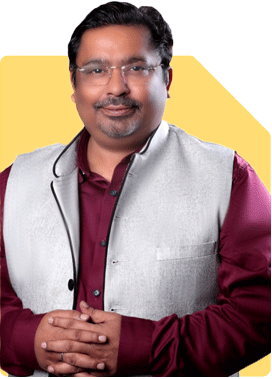



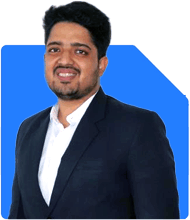

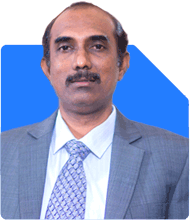
.jpg)









